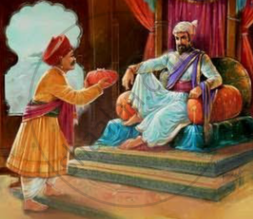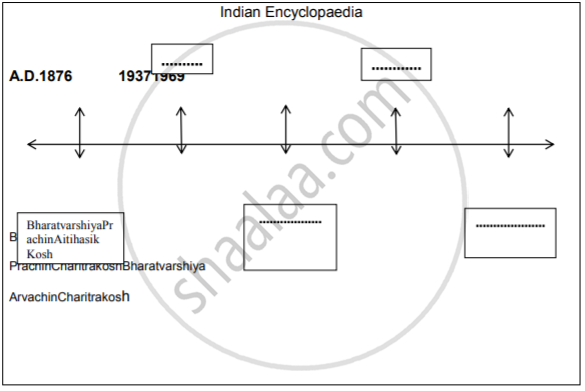Topics
Historiography : Development in the West
History : Applied History
Working of the Constitution
Historiography : Indian Tradition
The Electoral Process
Political Science : Working of the Indian Constitution
Applied History
Political Parties
History of Indian Arts
- What is ‘Art’?
- Indian Traditions of Visual Arts (Drik Kala): Painting
- Prehistoric Paintings
- Mural Paintings and Cave Painting
- Folk Styles of Paintings
- Classical Styles of Painting
- Miniature Paintings in Manuscripts
- Modern Indian Paintings
- Indian Traditions of Visual Arts (Drik Kala): Sculpture Art
- Indus Civilization Sculpture
- Folk Styles of Sculptural Art
- Classical Styles of Sculptural Art
- Indian Iconography
- Indian Traditions of Visual Arts (Drik Kala): Architecture and Sculpture
- Rock-cut Architecture
- Temple Architecture
- Indo-Islamic Architecture
- Indo-Gothic architecture
- Indian Traditions of Performing Arts
- Indian Theatre
- Indian Music
- Indian Dance
- Present Scenario of the Performing Arts
- Art, Applied Art, and Professional Opportunities
Social and Political Movements
- Movement
- Important Movements in India
- Tribal Movement
- Farmers Movement
- Worker's Movements
- Women’s Movement
- Environment Movements
- Consumer Movement
Mass Media and History
Challenges Faced by Indian Democracy
Entertainment and History
Sports and History
Tourism and History
Heritage Management
History - Imperialism
History - 20th Century Age of conflict
History - Emancipation of Asia and Africa
History - World after World War 2
Political Science
Geographical discoveries and colonization
- Concept for Geographical Discoveries and Colonization
Africa
- Imperialism - Africa
Asia: India, China, Japan
- Concept for Asia: India, China, Japan
Dictatorships in Europe, Second World War and world
- Concept on Dictatorships in Europe
- Concept for Second World War and World
First world war
- Concept on First World War
The League of Nations
- Concept for the League of Nations
Russian Revolution
- Concept for Russian Revolution
United Nations Organization
- Concept for United Nations Organization
Africa
- Emancipation of Africa
Asia
- Emancipation of Asia
Globalization
- Globalization After World War II
Scientific and Technological Progress
- Scientific and Technological Progress After World War II
Cold war
- Formation of the Cold War
Social Diversity and Democracy
- Social Diversity
- Coccept for Caste/Race and Democracy
- Concept for Language and Democracy
- Cocnept for Religion and Democracy
- Concept for Gender and Democracy
- Concept for Democracy and Diversity
Challenges to Democracy Remedial Measures to the Challenges
- Concept for Challenges to Democracy Remedial Measures to the Challenges
Internal work
Democracy
- Democracy - Meaning, Types and Characteristics
Political Parties and Types
- Political Parties
- Importance of Political Parties
- Major National and Regional Parties in India/ Types of Political Parties
Notes
Encyclopaedia and History:
- Impartiality is stressed in academic activities using encyclopaedias and history.
- Because of diverse priorities, encyclopaedias published in different countries and languages may take different approaches.
- National policies, moral standards, and ideals all have an impact on how they are structured.
- Encyclopaedias may be a tool for creating a sense of national identity. Take the Mahadevshastri Joshi-edited ‘Bharatiya Samskruti Kosh’ as an example.
- One of the main motivations for the development of encyclopaedias may have been to make information accessible to all people in all sectors of life.
- Encyclopaedias are produced by either a single person or a community of people who are inspired to learn and share information.
- Hence encyclopaedias are regarded as outstanding achievements of a society. It is the manifestation of the collective intellect and creativity of a society.
Encyclopaedias on History-related Subjects:
1. Bharatvarshiya Prachin Aitihasik Kosh:
- There is a rich tradition of producing encyclopaedias on historical subjects.
- The first book of this sort was 'Bharatvarshiya Prachin Aitihasik Kosh' by Raghunath Bhaskar Godbole (1876). It contains details on many people and locations in ancient India.
- According to the editor, ‘Those individuals who lived in Bharatvarsha, earned a name for themselves and were part of us along with their women, their sons, their religions, their lands and capitals, also the rivers and mountains in their lands…. whatever their history’ is given in this encyclopaedia.
2. Maharashtriya Dnyankosh:
- There are 23 volumes of Shridhar Vyankatesh Ketkar's 'Maharashtriya Dnyankosh' available.
- Ketkar's main motivation for creating it was to increase access to knowledge and to broaden the intellectual horizons of Marathi speakers. His broad perspective on history is represented in these volumes.
3. Bharatvarshiya Charitrakosh:
- Another significant encyclopaedia is ‘Bharatvarshiya Charitrakosh.’
- For the purpose of producing this encyclopaedia, Siddheshwarshastri Chitrav founded the ‘Bharatiya Charitrakosh Mandal’ committee.
4. Other significant Encyclopaedia:
Three volumes were published, namely
- ‘Bharatvarshiya Prachin Charitrakosh’ (1932)
- ‘Bharatvarshiya Madhyayugin Charitrakosh’ (1937)
- ‘Bharatvarshiya Arvachin Charitrakosh’ (1946)
The lives of people described in the Vedic literature, such as the Shruti, Smruti, Sutras, Vedangas, Upanishads, Puranas, Jain, and Buddhist literature, are covered in the first volume. Similar to this, the remaining two volumes have biographies of people who lived throughout those times.
5. Sthalakosh:
- For historical research, geographic data is essential.
- There are encyclopaedias that provide details on historical places.
(i) Sthanapothi -
- A detailed work called ‘Sthanapothi’ was written in the 14th century C.E. by Muni Vyas of the Mahanubhav sect.
- The author details every location Chakradhar Swami, the sect's founder, visited. It provides us with some information about Maharashtra at that time.
- Additionally, it provides information on the time, place and background of the events described in ‘Leelacharitra.’
- As a result, it is an excellent source for writing about Chakradhar Swami's life.
(ii) Prachin Bharatiya Sthalakosh -
- ‘Prachin Bharatiya Sthalakosh’ (1969) was compiled by Siddheshwarshstri Chitrav.
- It gives more knowledge on the various locations mentioned in the Vedic literature, the Kautiliya Arthashastra, Panini's Grammar, the Valmiki Ramayana, the Mahabharata, the Puranas, the medieval Sanskrit literature, Shabdkosh, as well as the Jain and Buddhist literature, the Greek, Chinese, and Persian literature.
6. Vishwakosh :
- In order to promote the field of Marathi language and literature, the first Chief Minister of Maharashtra, Honorable Shri.
- Yahswantrao Chavhan, started the collection of Marathi ‘Vishwakosh’ through Maharashtra Rajya Sahitya Samskruti Mandal.
- Under the direction of Tarkteerth Lakshmanshastri Joshi, the work was initiated. It has information on every imaginable subject. It also includes several crucial historical entries.
7. Bharatiya Samskruti Kosh
- Mahadevshastri Joshi edited and published ten volumes of ‘Bharatiya Samskruti Kosh.’ These volumes include details about Indian history, geography, and numerous linguistic and ethnic groups as well as their local histories, festivals, and other cultural characteristics.
8. Samdnya Kosh:
- The vocabulary of history is explained in encyclopaedias in terms like colonialism, globalisation, etc. These books are particularly helpful for history teachers.
- History teachers at high schools, and professors at colleges, and universities have several options in the encyclopaedia publishing industry.
- All encyclopaedias require historical expertise. Every subject has a history of development.
- History scholars can make major contributions to numerous sorts of encyclopaedias.
Text
| Early Encyclopaedias | |
|
Pliny the Elder |
1. Natural History:
|
|
Denis Diderot |
2. Encyclopaedia:
|
|
3. Encyclopaedia Britannica:
|
|
|
The use of dictionaries like "Nighantu," "Shabdakosh," and others dates back thousands of years. |
|
|
|
5. Rajavyavaharkosh:
|
| Some special encyclopaedia | |
|
1. Sangeetshastrakar va Kalavant Yancha Itihas:
|
|
|
2. Krantikarakancha Charitrakosh:
|
|
|
3. Svatantryasainik Charitrakosh:
|
|
If you would like to contribute notes or other learning material, please submit them using the button below.




